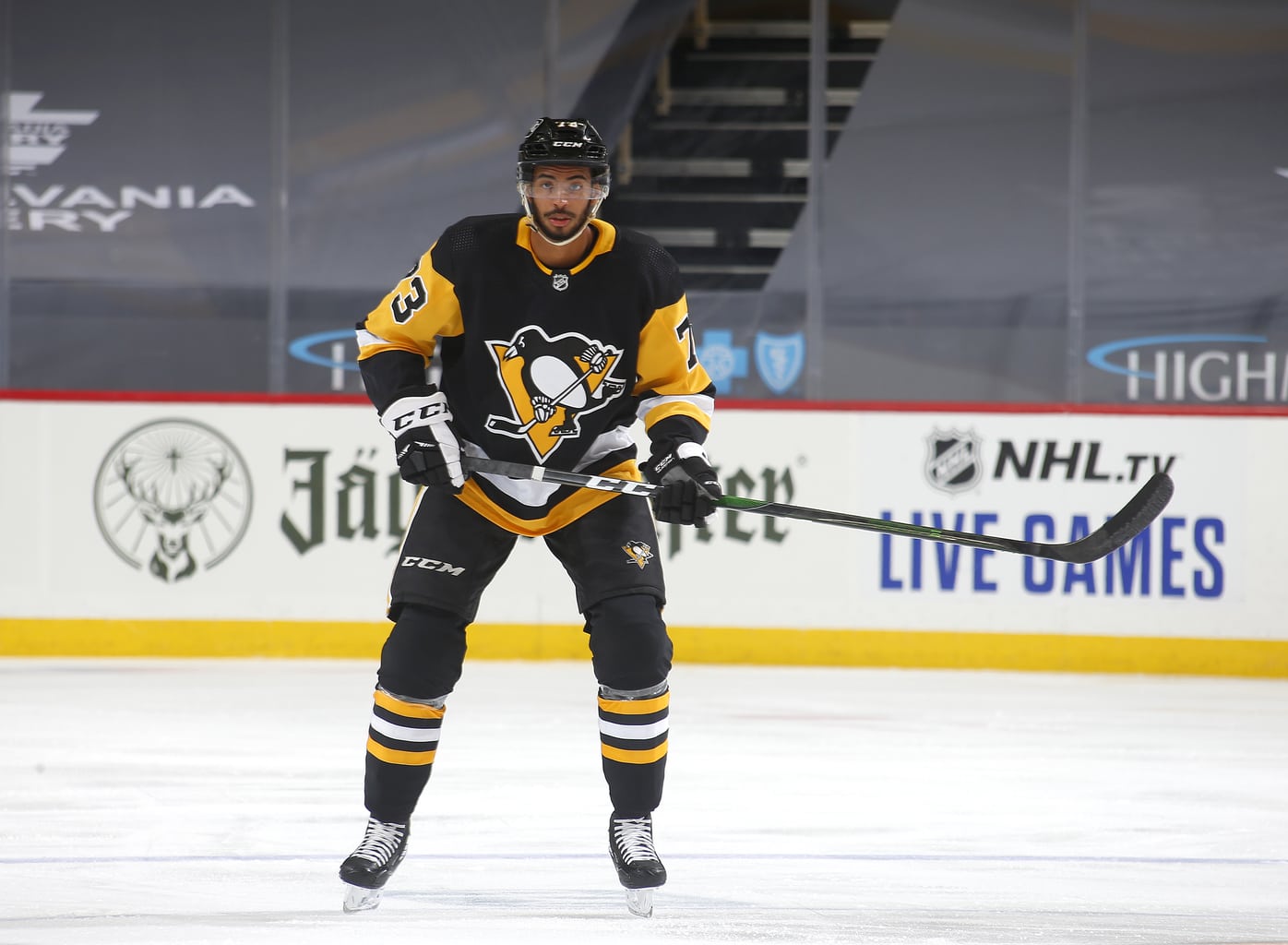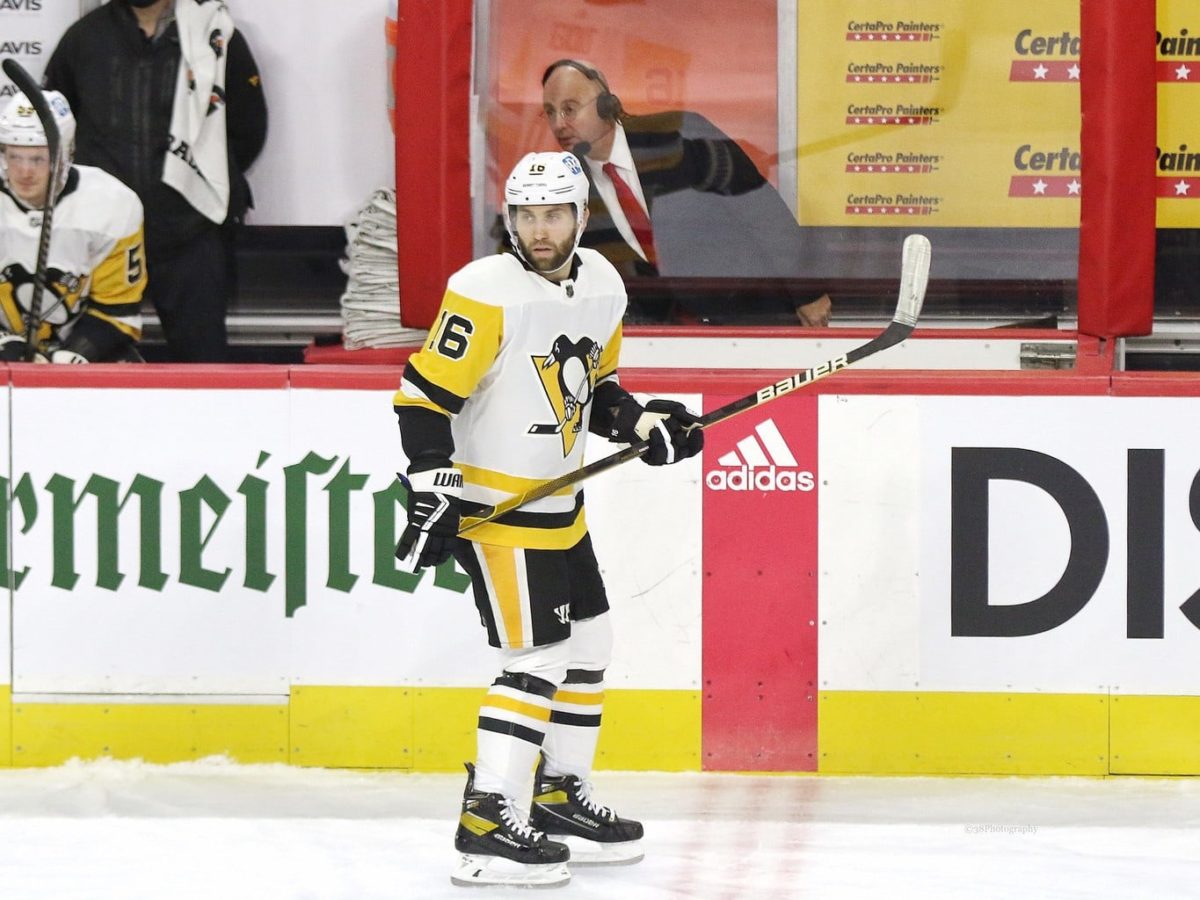
The Pittsburgh Penguins experienced strenuous turnover during the 2020 offseason after their agonizing loss to the Montreal Canadiens in the Toronto bubble last season. Losing to the 12th seed in the Eastern Conference and the 24th seed in the entire league gave former general manager Jim Rutherford the implication that change was needed. Bringing in the likes of Kasperi Kapanen, Mike Matheson, Cody Ceci, Mark Jankowski, Evan Rodrigues, and Colton Sceviour and letting go of familiar faces in Matt Murray, Patric Hornqvist, Conor Sheary, Justin Schultz, and more, the Penguins had a tumultuous offseason that brought about several key changes to their lineup. (from ‘Cody Ceci, Mike Matheson starting to contribute after a month with Penguins,’ Tribune Review, 02/15/2021) This article will cover and discuss the different breakouts and disappointments from the Penguins’ 2021 roster.
Breakout Players
Pierre-Olivier Joseph
Pierre-Olivier Joseph has been one of the unsung heroes of this reformed Penguins lineup. Joseph started the season on the Penguins’ 6-player taxi squad but quickly found himself on the top pairing with Kris Letang after several unfortunate injuries to the Pens’ blue line. He played in his first NHL game on Jan. 22 against the New York Rangers and has since shown his true potential for the Penguins’ future. Joseph has since put up 1 goal and 4 assists for 5 points in 14 GP with a +1 rating, logging 17:22 on average per game.
POJ’s advanced stats look good as well, posting a 50.8% Corsi-for percentage (over 50% indicates the team possesses the puck more than the opposition when a given player is the ice), per Hockey Reference. Joseph’s quick entrance into the Pens’ top pairing has thrusted him into the limelight, and he has embraced every moment of it so far this season.
Bryan Rust
It comes to no surprise that Bryan Rust has had a continuation of his strong play from the 2019-20 NHL season. He has started the season with 6 goals and 9 assists for 15 points in 18 games played, ranking first or second in all categories mentioned. Rust has shown his versatility for the Penguins, playing on both a line with Sidney Crosby/Jake Guentzel and Evgeni Malkin/Jason Zucker. Rust, like Joseph, has rather impressive advanced metrics as well.
Rust has recorded a 54.2% CF% and a 60.2% ozS% (indicates what percentage of faceoffs were taken in the offensive zone with this player on the ice), according to Hockey Reference. He’s currently on pace for 18-29-47 in a full 56-game season, barring any unforeseen circumstances such as injuries or scratches. His uptick in production since 2019 has helped round out the Penguins’ top 6 depth tremendously.
Tanev-Blueger Duo
The Penguins’ continued success, despite the injury bug hitting the team hard, can, in large part, be attributed to the fantastic play of Teddy Blueger and Brandon Tanev. Blueger and Tanev have recorded 3-8-11 and 5-2-7 in 18 games played, respectively, including a short-handed goal for each. While their production is stellar for their third-line role, the speed and energy they bring to the lineup is the key reason they are so effective. Blueger and Tanev are the backbones to the Penguins’ penalty kill, boasting a total of 110 hits, 34 blocks, and 20 takeaways together.
Blueger and Tanev’s importance is seen more so on defense, however, as nearly 80% of the faceoffs they partake in are in the defensive end, allowing only 15 goals between the two thus far, according to Hockey Reference. With the lack of production thus far from the Penguins’ second line, they’ve helped provide an unexpected source of secondary scoring for the bolstered offensive corps.
Disappointing Players
Evgeni Malkin
Evgeni Malkin has had more than a slow start to this shortened NHL season. Perhaps the most predictable and obvious choice in this article, he has started the season with a statline of 4-8-12 in 19 games played, the slowest 19-game start of his career thus far. While 12 points in 19 games is by no means bad, Malkin is known as one of the top centers in the league and is expected to score as such. Currently, he ranks 49th among NHL centers alone with regards to points, and in a normal season, Malkin would be on pace for 17-34-51, which would all be record lows compared to all of his previous seasons paces (had he played 82 games in each).

Unfortunately, Malkin’s slow start has hindered his linemates as well. Jason Zucker and Rust have each recorded statlines of 4-3-7 in 17 GP and 1-1-2 in 5 games played with Malkin, respectively. Until Malkin, and his linemates for that matter, get their rhythm back, it will be difficult for the Penguins to keep pace in an extremely difficult East Division.
Jason Zucker
As mentioned previously, the Penguins’ second line has been anything but dynamic so far this season. While Evgeni Malkin is the centerpiece of that line that people focus on when all goes awry, Jason Zucker is another reason why the Penguins have had a lack of success on their secondary scoring unit. Zucker came to the Pens in a deal just before the trade deadline of the 2019-20 season and was expected to come in and be Malkin’s support system on the second line.

Zucker recorded 12 points in 15 games last season with the Penguins before the unexpected pause due to COVID-19, but he has since only put up 9 points in 21 games, including the Pens’ four-game stint in the bubble last postseason. Malkin and Zucker have the potential to be an extremely dynamic duo in the Penguins’ top 6 but will need to return to their 2019-20 form to do so.
John Marino
Had this article been written around this time a year ago, John Marino’s name would be the headline for the “Breakout Players” list. What a difference a year can make. So far this season, Marino has really struggled to keep up with his increased workload. After inking a 6-year, $26.4 million contract with the Penguins in the early stages of training camp, Marino has posted just three total points in 19 GP this season so far, putting him at a pace for roughly 9 assists on the season.

Conveniently enough for comparison, Marino played exactly 56 games last season before the pause, posting 6-20-26, a significantly better statline than his production so far this season. With his contract extending through the 2026-27 season, his production, leadership, and development are as important as any Penguins for the sake of the future of the franchise.
As the trying year of 2021 continues to “March” (pun intended) on, the Penguins continue to find ways to win under coach Mike Sullivan. Some key contributions from unlikely faces have helped the Penguins alive and well in this sprint to the playoffs. However, without the typically reliable second-line contributions to the scoresheet, it will be difficult for the Penguins to keep pace with the rest of the contenders in the division. Players like Malkin, Zucker, Marino, and others finding their stride this season will be immeasurably important and likely will be the thin line between playoff-bound and sitting on the couch watching come May.
